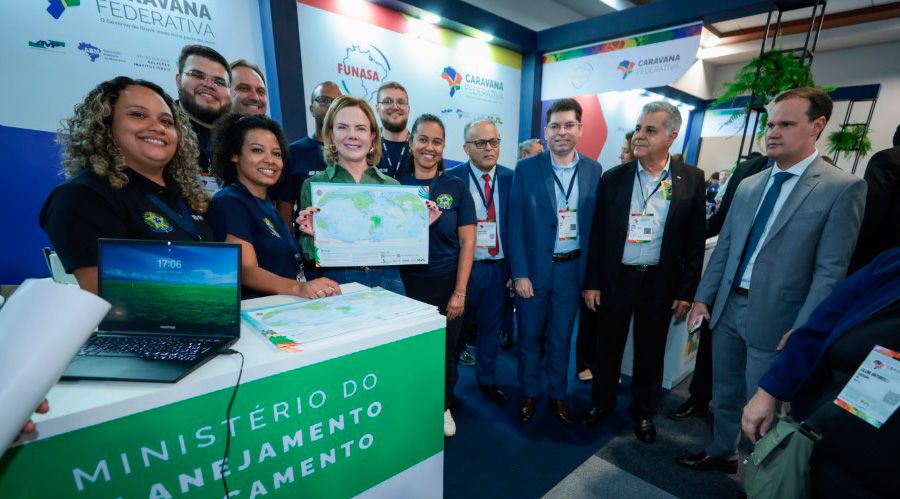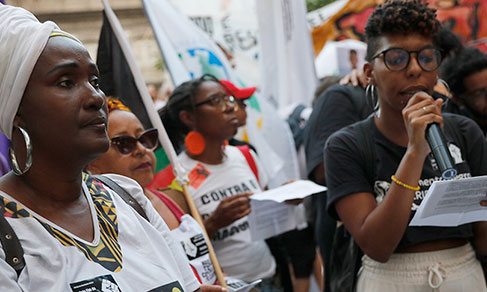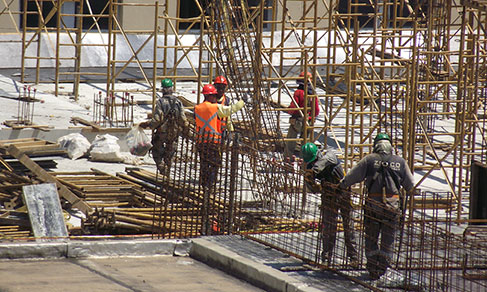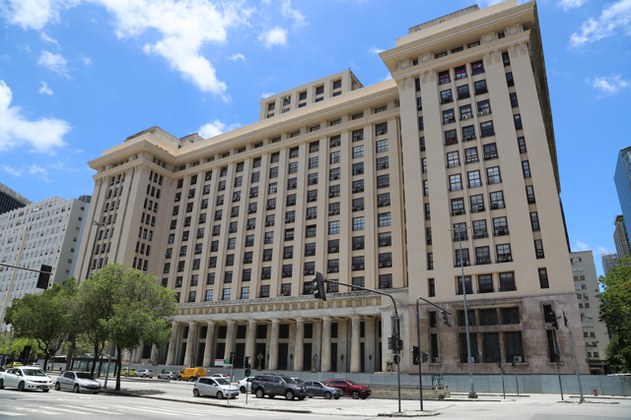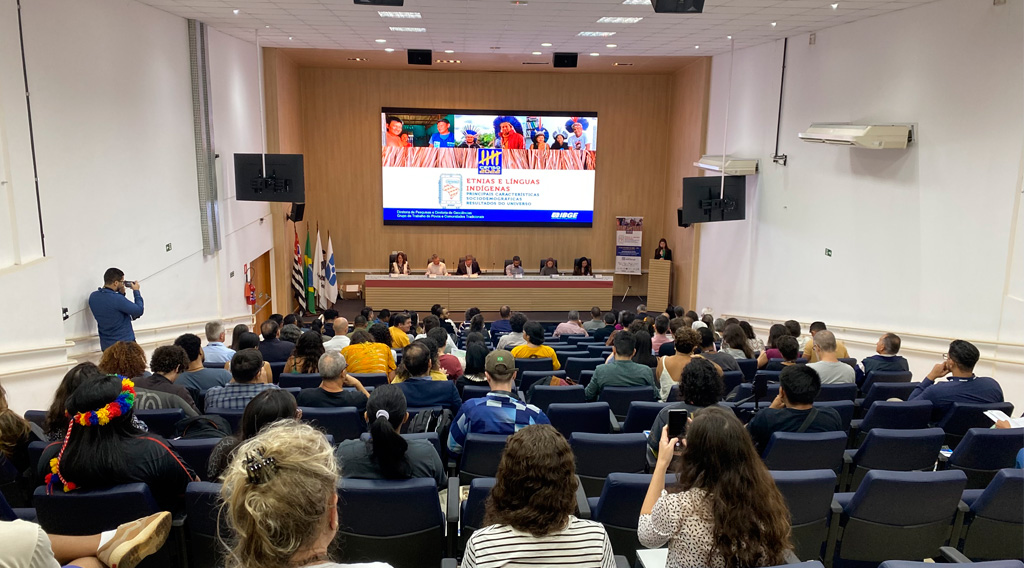Profile of Municipalities
MUNIC 2023: 31.9% of Brazilian municipalities still dispose of solid waste in landfills
November 28, 2024 10h00 AM | Last Updated: December 05, 2024 09h20 AM
Highlights
- In 2023, 31.9% of Brazilian municipalities still used landfills, considered the worst waste disposal method, as the final disposal unit for solid waste. In 28.6% of the municipalities, there were sanitary landfills, while controlled tipping were used in 18.7%.
- According to the National Solid Waste Policy, municipalities with a population of over 50,001 residents should have implemented environmentally appropriate final disposal of waste and put an end to landfills by August 2023. However, 21.5% of these municipalities still had landfills as the final disposal unit for solid waste.
- In Brazil, 3,364 (60.5%) of the municipalities with some solid waste management service had selective collection, while 56.7% implemented legal instruments that deal with selective collection, indicating that there is a convergence between legislation and practice in just over half of Brazilian municipalities. Of the 5,557 municipalities with urban cleaning and solid waste management services, 4,093 (73.7%) reported the presence of informal waste workers. Waste workers' entities focused on selective waste collection were present in 1,498 (27.0%) municipalities.
- The existence of some kind of drainage and rainwater management device was reported in 5,348 (96.0%) municipalities in 2023. The Southeast Region had the highest percentage of municipalities with the service (99.6%) and the Northeast, the lowest (89.3%).
- In Brazil, 24.5% of municipalities reported having nature-based solutions as sustainable drainage strategies, while 57.5% did not and 18.0% did not know of it.
- The lack of financial/fiscal incentives and/or budgetary provision was the greatest difficulty reported against the implementation of sustainable drainage, reported by 2,872 municipalities.
- In 2023, 3,112 municipalities (55.9%) reported having a final Municipal Basic Sanitation Policy, a number significantly higher than the 2,126 (38.2%) in 2017. 833 municipalities (15.0%) reported being in the process of preparing their respective Policy. In 2017, these were 1,342 (24.1%).

Fourteen years after the enactment of the National Solid Waste Policy (Law 12,305, of 02/08/2010), which in its article 54 establishes deadlines for the implementation of environmentally appropriate final waste disposals, 31.9% of Brazilian municipalities still use landfills for solid waste, which considered the least appropriate. In 28.6%, the final disposal was done in sanitary landfills, while controlled tipping were used in 18.7%, and a municipality may have more than one form of disposal of solid waste.
Among the Major Regions, landfills were still used in 73.8% of municipalities in the North Region, 51.6% in the Northeast, 52.9% in the Central-West, 12.1% in the Southeast and 5.7% in the South. The data are from the Sanitation Supplement of the Survey of Basic Municipal Information (MUNIC) 2023 and were released today (28) by the IBGE.
“Landfill and the controlled tipping are very similar, but both differ from sanitary landfills. Landfills do not have any type of control, while controlled tipping, as the name suggests, have some level of management, but does not guarantee total environmental adequacy. Sanitary landfills are meant for this purpose, therefore they have all the necessary structure, such as leachate treatment, for example”, explains the manager of the National Survey of Basic Sanitation, Fernanda Malta.
Article 54 of the National Solid Waste Policy establishes deadlines for the implementation of environmentally appropriate final disposal of waste, i.e., the end of landfills:
• August 2, 2021, for capitals and municipalities in Metropolitan Areas or Integrated Development Areas - RIDE;
• August 2, 2022, for municipalities with a population of over 100,000 residents or that are less than 20 km from the border with neighboring countries;
• August 2, 2023, for municipalities with a population between 50,000 and 100,000 residents; and
• August 2, 2024, for municipalities with a population of less than 50,000 residents.
Taking into account the period of collection (September 2023 to March 2024), municipalities with a population of more than 50,001 residents should have implemented environmentally appropriate final disposal of waste and put an end to landfills. However, 21.5% of these municipalities still had landfills as the solid-waste final disposal.
Among Major Regions, the situation of municipalities with more than 50,000 inhabitants is different. In the North Region, 57.7% of these municipalities had landfills as the final disposal unit for solid waste. The proportion drops to 38.3% in the Northeast and to 29.5% in the Central-West and is close to the target in the Southeast (7.0%) and South (1.8%).
Selective collection was present in 60.5% of Brazilian municipalities
In Brazil, 3,364 (60.5%) of the municipalities with some solid waste management service had selective collection, while 56.7% implemented legal instruments that deal with selective collection, indicating that there is a convergence between legislation and practice in just over half of Brazilian municipalities
Regionally, there was a large variation. The South Region led in both categories, with 81.9% of municipalities having selective collection and 74.5% with specific legislation. In contrast, the North Region had the lowest values, with 33.5% and 42.2%, respectively, which shows the need to expand the coverage of the service, since legal instruments are more present than implementation itself.
In the Northeast, there was also a difference between municipalities with legal instruments and those offering selective collection services, 38.2% and 33.5%, respectively, suggesting that there is still a need for efforts to be made to implement public policies on selective collection.
Three out of four municipalities with cleaning services had informal waste workers for recyclable material
Of the 5,557 municipalities with urban cleaning and solid waste management services, 4,093 (73.7%) indicated the presence of informal waste workers. Selective collection entities were present in 1,498 (27.0%) municipalities, though.
In the North Region, 72.5% of municipalities had informal waste workers and 16.7% had selective collection entities. In the Northeast, 71.8% and 18.7%, respectively. The Southeast, which was the region with the highest percentage of municipalities with informal waste workers (78.0%), led in terms of selective waste collection entities, operating in 33.5% of municipalities. The South had 70.2% and 35.5%, respectively, and the Central-West, 75.3% and 23.2%.
96.0% of municipalities had drainage devices
The existence of some drainage and rainwater management devices was reported in 5,348 (96.0%) municipalities in 2023. The Southeast region had the highest percentage of municipalities with the service (99.6%) and the Northeast, the lowest (89.3%).
The low percentage of municipalities with drainage services in Piauí (47.8%) influenced the total for the Northeast region. It is noteworthy that, of the total number of municipalities in Piauí, 50.4% are located in the Drought Polygon area, in the Brazilian Semi-Arid Region. Expanding this observation to the entire Northeast Region, of the 191 municipalities in the Northeast without drainage services, 174 are part of the Drought Polygon.
“Drainage is divided into two types: micro and macro drainage. Micro drainage controls rainwater in urban areas through street paving, curbs and gutters, manholes, etc. Macro drainage, on the other hand, is comprised of channels that receive water from micro drainage and are responsible for the final flow of water through natural or artificial channels, storm drains, creeks, streams, rivers and large drainage devices”, Ms. Malta points out.
Nature-based solutions for drainage and water management were adopted in 24.5% of municipalities
In Brazil, 24.5% of municipalities reported having nature-based solutions as sustainable drainage strategies, while 57.5% did not and 18.0% provided no information.
“Nature-based solutions are approaches to solving social, economic and environmental challenges using natural processes and elements in a sustainable way. As this question is an innovation in the survey, the answer “I don’t know” was also important, as not knowing is also information in this case, for sometimes respondents do not even know that such a structure is a sustainable drainage equipment”, highlights the survey manager.
With the objective of mapping rainwater management actions aimed at sustainable drainage, respondents were asked whether they adopted any of the Nature-Based Solutions: constructed wetlands; urban greenways; green streets; rainwater beds or rain gardens; soil bioengineering or natural engineering; urban linear parks; and infiltration ditches.
The types of green infrastructure that predominated in the country in 2023, according to information from the agencies in charge of the rainwater management service, were infiltration ditches (40.8%), followed by urban parks (35.3%). Municipalities can report adopting more than one nature-based solution.
Lack of financial incentives and consolidated built-up areas are the main obstacles to implementing sustainable drainage
The survey also investigated possible reasons and difficulties that municipalities might be facing implementing Nature-Based Solutions, and respondents could choose more than one answer.
Lack of financial/fiscal incentives and/or budgetary provision was the greatest difficulty reported, reported by 2,872 municipalities. Consolidated built-up areas (dense urbanized areas or areas occupied for more than 10 years) were reported by 2,296 municipalities, ranking second in terms of difficulties in expanding or implementing sustainable drainage. Lack of qualified personnel (2,162) and absence of legislation (2,152) are next on the list.
Proportion of municipalities with a Basic Sanitation Policy grows from 38.2% in 2017 to 55.9% in 2023
In 2023, 3,112 municipalities (55.9%) reported having completed their Municipal Basic Sanitation Policy, a number significantly higher than the 2,126 (38.2%) of 2017. Another 833 municipalities (15.0%) reported being in the process of drafting their respective policy. In 2017, they were 1,342 (24.1%).
In all population size ranges of municipalities, more than half reported having finished writing their policy. The 1,370 municipalities with more than 10,000 to 20,000 inhabitants had the lowest percentage of those with a Policy (51.1%) and the highest percentage of those with the policy under development (17.3%).
“In order to obtain more substantive percentages and ensure a greater basis for the analysis, the numbers of municipalities with existing and under-development policies were combined and, when comparing the periods, it is possible to conclude that Brazilian municipalities were able to continue producing their Municipal Basic Sanitation Policies on a regular basis from 2017 to 2023”, adds the manager.
Access to information and user participation in basic sanitation services were seen in 69.1% of the municipalities
Regarding access to information and user participation, the survey included three questions in the questionnaire: whether there was a public information system on sanitation services; whether there was an ombudsman; and whether there was a citizen service center to receive complaints or statements about sanitation services. In 69.1% of Brazilian municipalities, the manager reported the existence of at least one of the three services mentioned.
Municipal Environmental Education Policies were present at 30.8% of the municipalities
Regarding the Municipal Environmental Education Policy, there was a significant lack of representation in municipalities, as the survey recorded that, in 2023, there were 1,120 municipalities with it in force, 597 with it under development, and 3,848 cities did not have it or were not developing it. Therefore, only 30.8% of Brazilian municipal administrations stated that they had completed the process for issuing this document or were in the process of preparing it.
Among the Major Regions, it is interesting to note that in the sum of municipalities with an existing Municipal Environmental Education Policy and those under preparation, the lowest percentage was found in the South of the country (20.9%), and even lower in those with up to 5,000 inhabitants (13.8%), which represents the largest portion of localities in the area, 37.0% of the total.
The Northeast Region had the second lowest prevalence of this policy in the combined circumstances (29.0%). The Central-West stood out with 38.1% of its municipalities having a Municipal Environmental Education Policy, either with the Policy in effect or with it still under preparation.
More about the survey
The Sanitation Supplement of the Basic Municipal Information Survey (MUNIC) 2023 presents information on the management of urban cleaning and solid waste management services, and rainwater drainage and management in the 5,570 municipalities in Brazil.
It also provides information on the characterization and infrastructure of the sanitation service management body, legislation and management instruments, nature-based solutions, selective collection and collectors, reverse logistics, regionalization, environmental education and billing.






